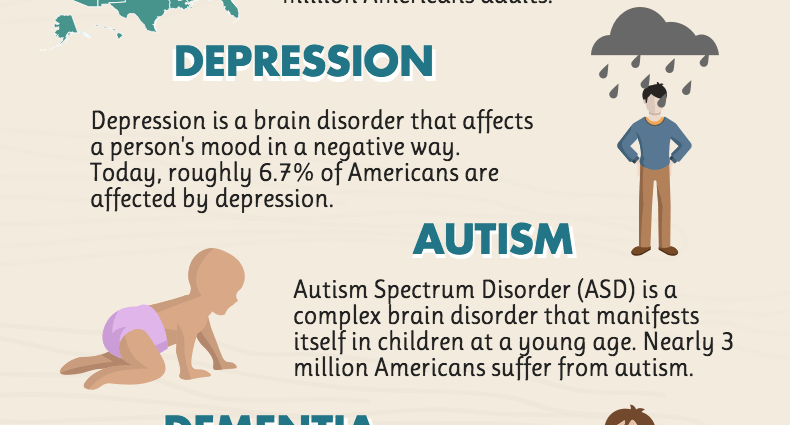Contents
In recent years, the topic of mental health has become the focus of public attention: for many it is no longer a secret that taking care of it is as important as taking care of physical health. However, more than half of patients with symptoms of certain disorders are not aware of their diagnosis and do not receive proper treatment. Let’s talk about the most common cases.
1.Depression
Depression affects an estimated 264 million people worldwide, making it perhaps the most common mental disorder. However, patients often do not know that they are sick with it – because they do not go to specialists, or because when they go to doctors they are given an incorrect diagnosis.
This is primarily because the symptoms of depression vary from person to person: everyone has heard of sadness and depression, but a depressed person may experience anger or suffer from physical pain of unclear origin. Triggers also vary, and the condition itself can be both severe and moderate – the latter is not noticed especially often.
Doctors themselves make mistakes: for example, one of the symptoms of depression in older people is memory problems, but the patient is often treated for dementia, not depression.
2. Bipolar disorder
As early as ten years ago, some doctors began to sound the alarm, saying that their colleagues did not notice the symptoms of bipolar personality disorder in their patients. But, unfortunately, even today the situation is far from ideal. On the one hand, patients may not know about their diagnosis for years, and on the other hand, instead of a “bipolar” treatment for another disease – according to statistics, in about 20% of cases, doctors prescribe treatment for depression.
Bipolar disorder is usually characterized by fluctuations in mood, energy, and activity levels that are so extreme that they prevent the person from functioning normally. But, again, there is no single scheme: periods of ups and downs are of different duration, and along with bipolar, the patient may have another disorder – for example, anxiety.
3. Eating disorders
Many people think that eating disorder is the problem of “wealthy teenage girls”, but this is far from being true: absolutely everyone can suffer from eating disorders, including men and the elderly. The problem is that the latter are especially rarely diagnosed, which means they never receive the necessary treatment.
Now, after a year and a half of stress and partial isolation, experts predict an increase in eating disorders and urge everyone to carefully monitor their condition and changing eating habits.
4. Post-traumatic stress disorder
Contrary to popular belief, PTSD isn’t just limited to war veterans like De Niro’s character in Taxi Driver. For example, 70% of Americans experience a major traumatic event at least once in their lives—a natural disaster, a car accident, an attempted rape, a terrorist attack—and 20% of them develop PTSD.
The disorder manifests itself in acute physical and emotional reactions when a person remembers what happened. And they can accompany a PTSD sufferer for weeks, months, and even years.
5. Borderline personality disorder
A patient with this serious mental disorder may be characterized by increased impulsivity, lack of self-control, anxiety, and dangerous behavior, including self-harm.
Alas, this condition is especially rarely diagnosed – firstly, because people simply do not reach the doctors, and secondly, because the manifestations of BPD are easily confused with symptoms of depression, anxiety, and even bipolar disorder.
In addition, it is one of the most stigmatized disorders: many believe that a person with BPD is simply a danger to society. Therefore, people with the corresponding symptoms are afraid to admit them and fear that others will find out about the diagnosis.
Their fears are easy to understand. And yet, if some of the symptoms described made you wary, or if your own mental state, in principle, inspires you with fear, please seek qualified medical help as soon as possible.
But do not limit yourself to visiting one doctor: your task is to collect as many opinions of professionals as possible and choose the therapist who will help alleviate your condition.










